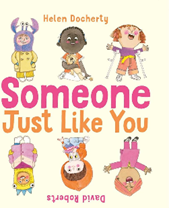I can catch a monster – Bethan Woolvin
|
Text: I can catch a monster – Bethan Woolvin Lesson plan by Andrew Moffat www.no-outsiders.com |
|
Enquiry question: Are all monsters scary? |
|
RSE links: Respectful
relationships- the
importance of respecting others, even when they are very different from them
(for example, physically, in character, personality or backgrounds), or make
different choices or have different preferences or beliefs |
|
Success Criteria: I know appearances are not always what
they seem / I know not to judge someone from their appearance |
|
Starter: Think about characters in stories who defeat monsters – what do they look like? Why are monsters in stories defeated – why do they need to be defeated? What are the common themes for monsters and for monster killers? |
|
Main: Read
‘I can catch a monster’ and discuss; -
Why do
you think Erik and Ivar do not let Bo come with them to hunt monsters? (why
do they sneer?) -
Why do
you think Bo assumes every monster is bad and needs to be “got”? -
What
does she gradually find out about monsters? -
Bos
brothers, “didn’t look or smell or sound like monsters… but they were certainly
acting like monsters.” What does that mean? Why does the author use the term
“beastly” to describe Erik and Ivar? -
The
last page uses the word “creatures” rather than “monsters” – why? -
What
has Bo taught her brothers? |
|
Activity: Look at the two maps at the start and the end of the book; how has the map been changed? Why? What is the impact of the language used on the first and second maps? Children
draw their own map of an imaginary kingdom showing where different creatures live,
making sure to use positive, inclusive language. |
|
Plenary:
what does “Don’t judge a book by its cover” mean? Why is this story about
that? How is this relevant in our lives and our school as we meet different
people? Bethan Woolvin also wrote a story based on the fairy tale 'Rapunzel' (there is a lesson plan on this blog) where the princess saves herself rather than waiting for a prince. Compare this story to 'Rapunzel'; what are the similarities? What do you think the author is trying to encourage the reader to question? Why are these stories about no outsiders? |




Comments
Post a Comment